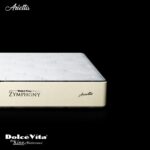A clean, well-maintained mattress can last longer than an overlooked one. It can also promote more enjoyable and restful sleep. That’s what Consumer Reports found out by speaking with cleaning experts and using its own tests to develop this guide to properly cleaning and caring for mattresses.
“Dust mites, pollen, dust and dirt can cause allergies and trigger asthma attacks,” says Brian Sansoni, senior vice president of communications at the American Cleaning Institute. “Sleeping on a clean mattress can prevent these triggers and help you get a good night’s sleep.”
In addition to its health benefits, a clean mattress can also help prevent pest infestations. That’s why it’s important to pay as much attention to it as you do to your couch and focus on how and how often you clean your mattress.
Back in the days when most mattresses could be turned over, the general rule was to turn them over twice a year and take the opportunity to clean them. Nowadays, most mattresses, including pillow top mattresses, cannot be returned because they have a top and bottom. But cleaning your mattress twice a year is still a golden rule. (Check the instructions on the mattress label, as the manufacturer may recommend turning it inside out from head to toe to ensure even wear).
How To Deep Clean Your Mattress
First, if your mattress has a recent stain, treat it immediately after removing your bedding. Take an appropriate stain remover, a few dry cloths and treat the stain as you would a carpet: dab, do not rub. If the stain is not recent or requires a more thorough cleaning, here are some steps you can take.
- Wash Your Sheets
Remove all sheets and bedding from the mattress and put them in the wash. To remove stubborn stains, use a laundry stain remover and follow the care instructions on your sheets.
- Vacuum Your Mattress
Then, vacuum the entire surface of the mattress using the upholstery nozzle of your vacuum, paying special attention to seams and crevices, where dirt, dust, and dead skin can accumulate. Use the slot nozzle on your vacuum cleaner to clean thoroughly. (Our tests have shown that a conventional vacuum cleaner is sufficient, so you don’t need to invest in a mattress vacuum.) If you have a pillow-top mattress, do the same thing: use the slotted tip to clean the creases from the surface and go around the seams as much as possible.
- Clean The Stains On Your Mattress
Once the suction is complete, look for dry stains and treat them locally with an appropriate cleaner. An upholstery cleaner or enzyme-based deodorizer can be effective on many body or body fluids, such as wine. For other stains, such as dirt or grass, try a simple solution consisting of a teaspoon of mild dishwashing liquid and a glass of warm water.
- Deodorize Your Mattress
Then, deodorize the mattress by sprinkling baking soda all over the surface, without hesitating to empty an entire packet. If you can place the mattress near a window, don’t hesitate. Sunlight will enhance its purifying power. For best results, leave the baking soda on for 24 hours and go to sleep on the couch, or go on that long-dreamed overnight getaway.
- Clean The Baking Soda
Once the baking soda has had time to work, run a dry cloth over the mattress and wipe off as much of the baking soda as possible. Then go over the mattress one last time using the upholstery nozzle of your vacuum cleaner. Note that vacuuming fine powders, such as baking soda, can damage some vacuums. Check the user manual first and wipe down as much baking soda as you can by hand, using your vacuum cleaner only for hard-to-reach corners. Sansoni also suggests using a light spray with a fabric refresher to help remove lingering odors. For a double action, choose a product with a formula designed to reduce allergens from pollen and dust mites.
Note: If anyone wants to get orthopaedic bed mattress just visit it for best price.







